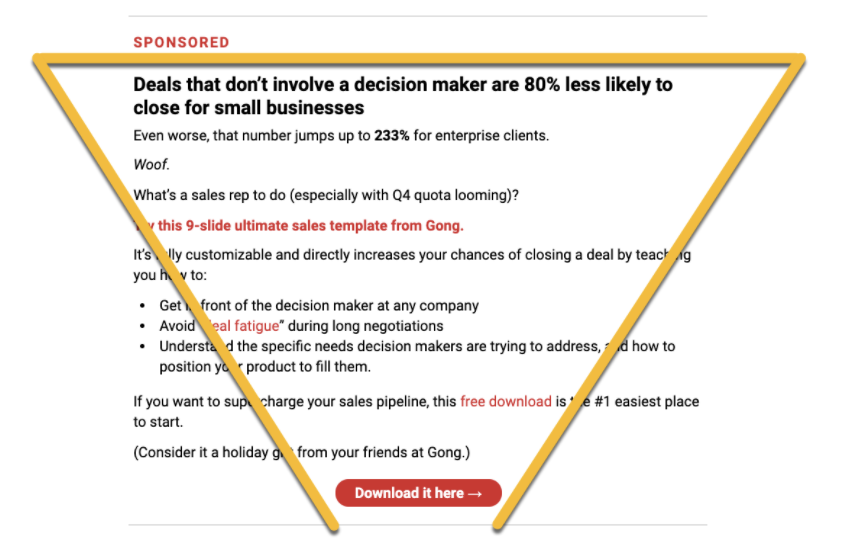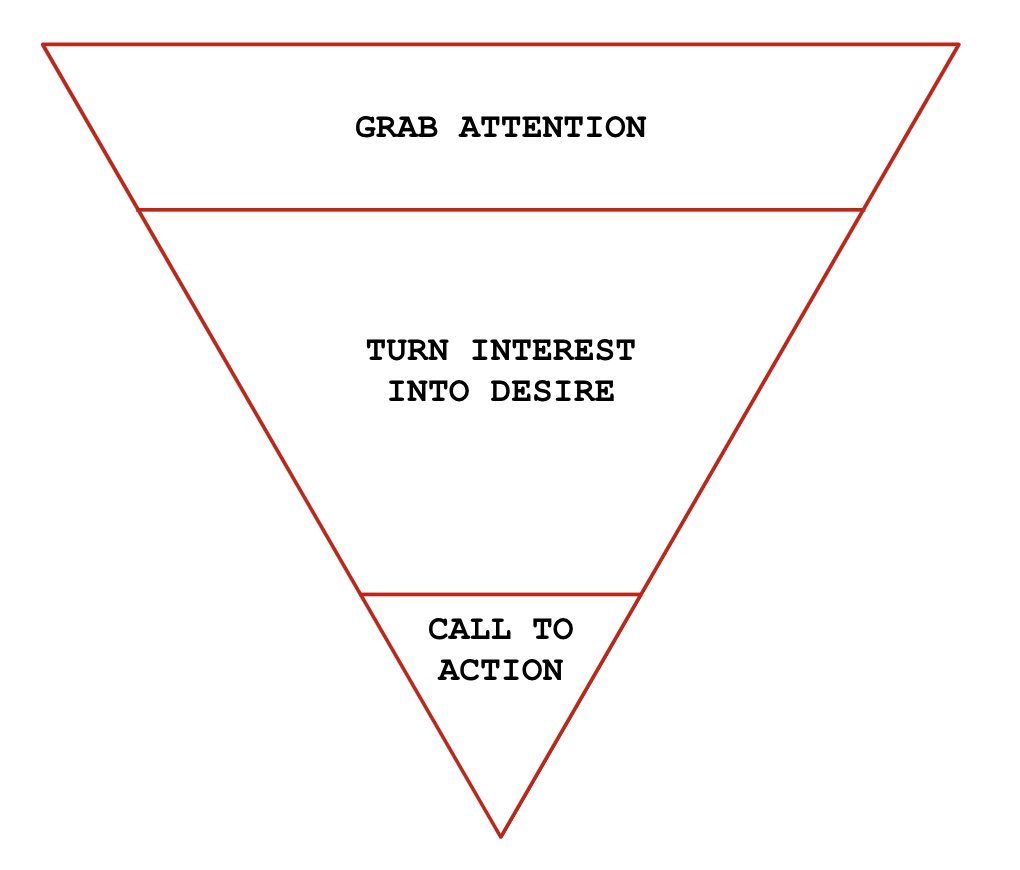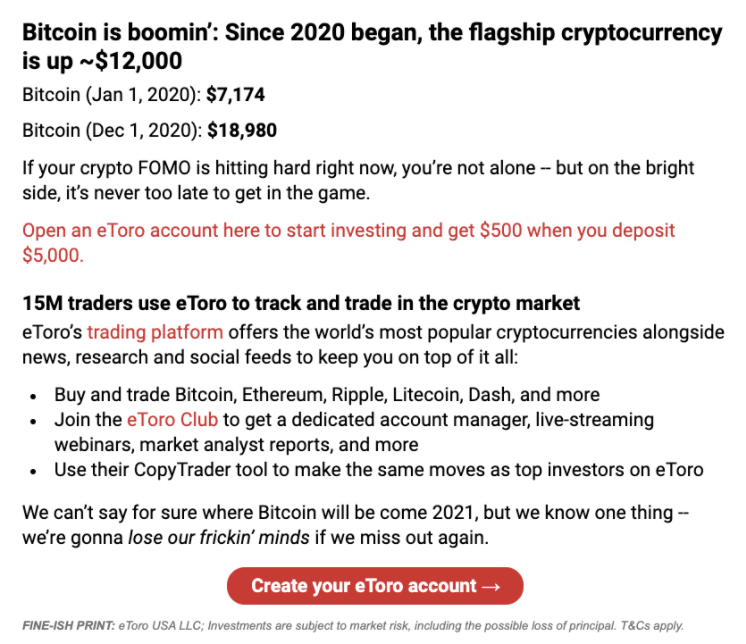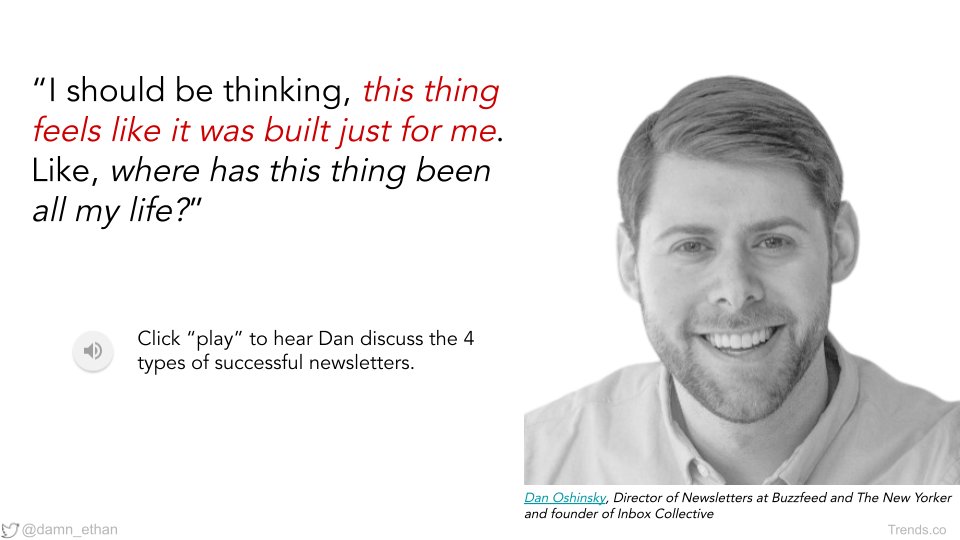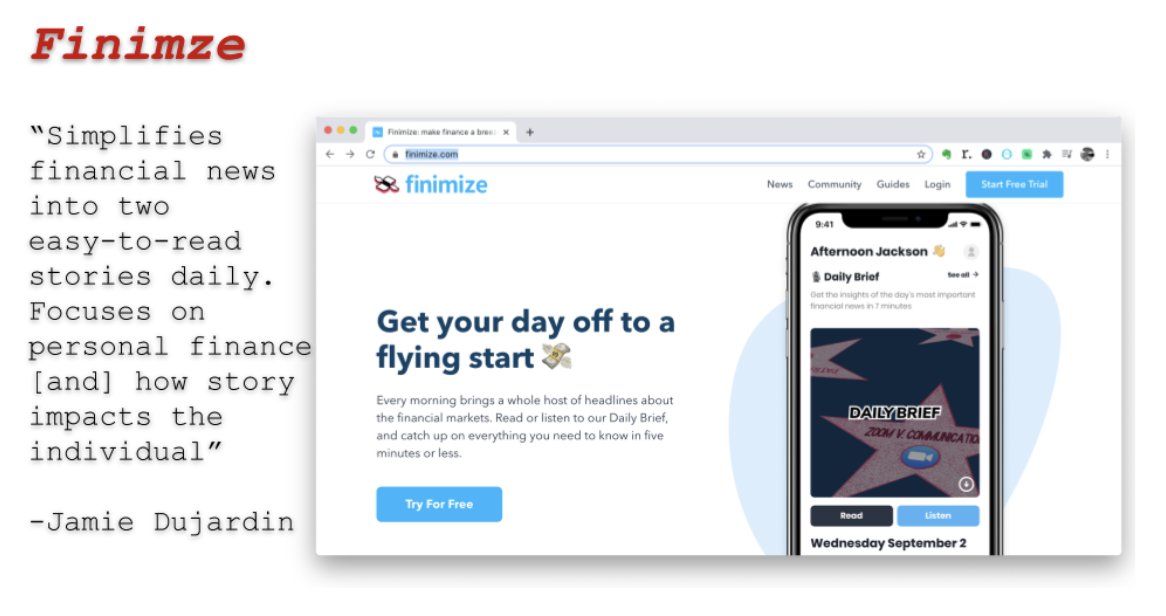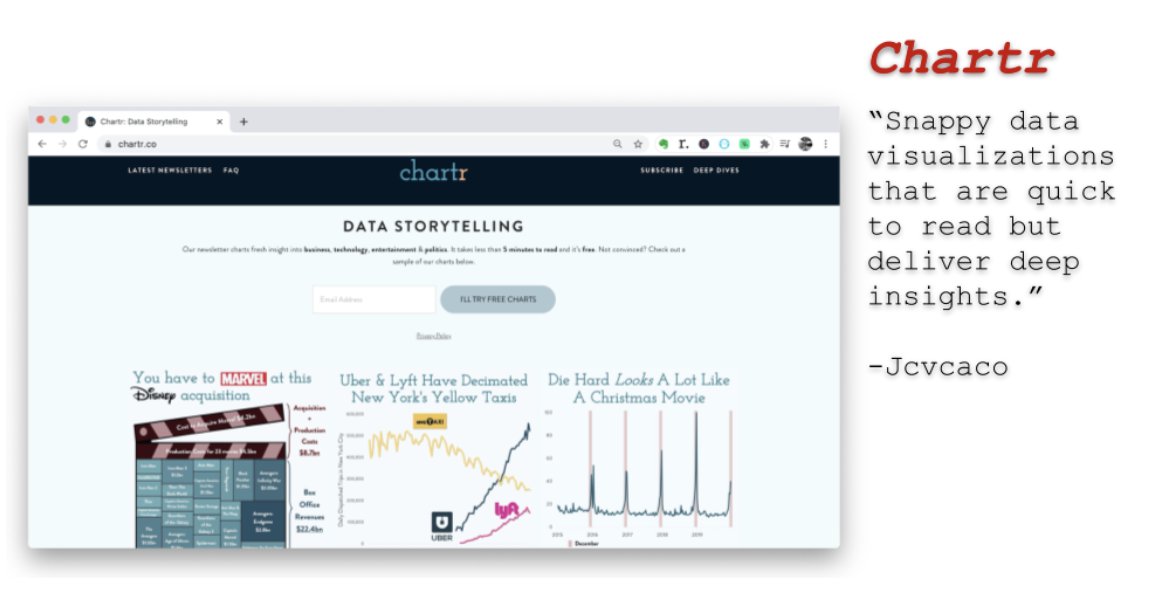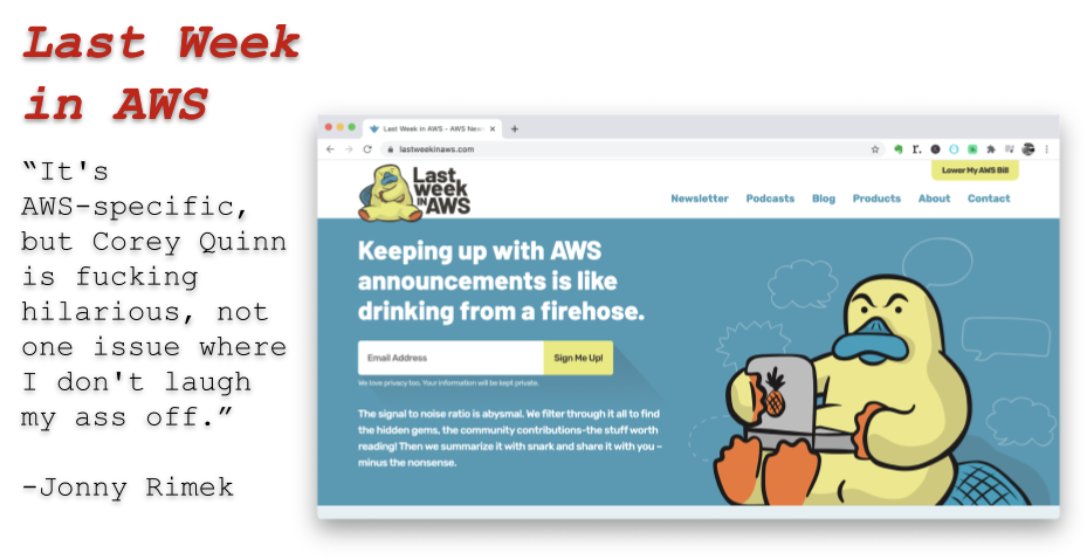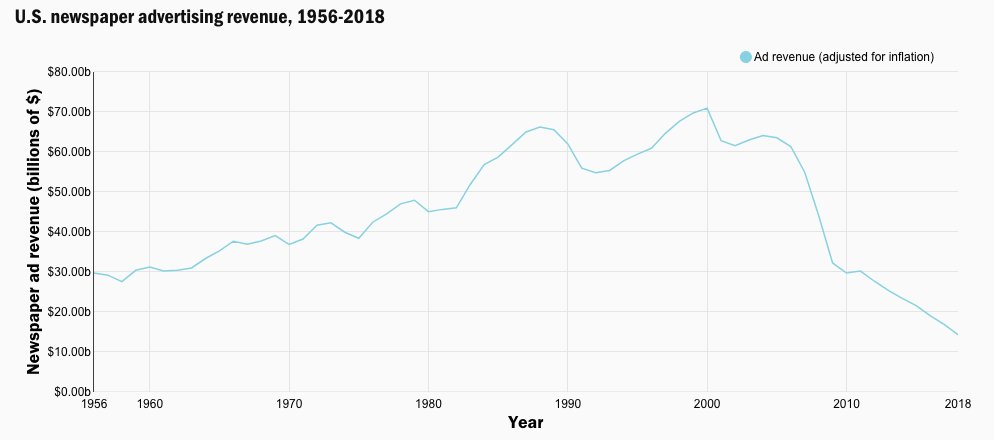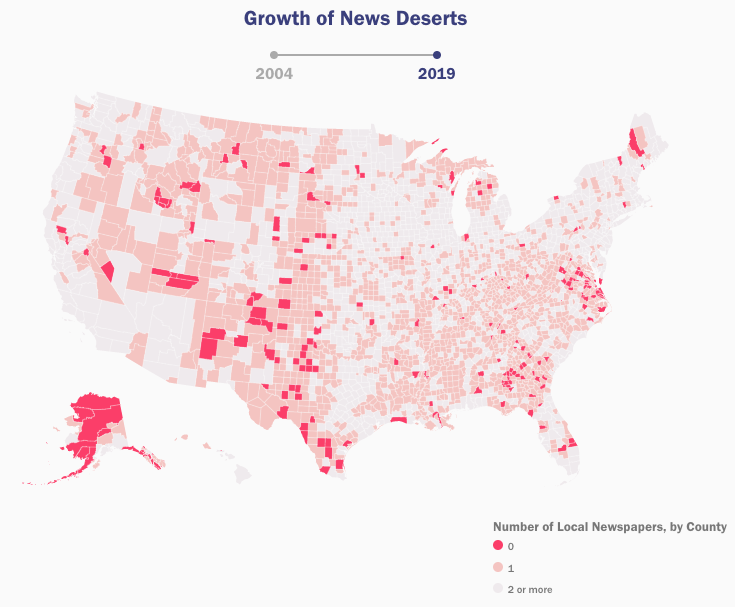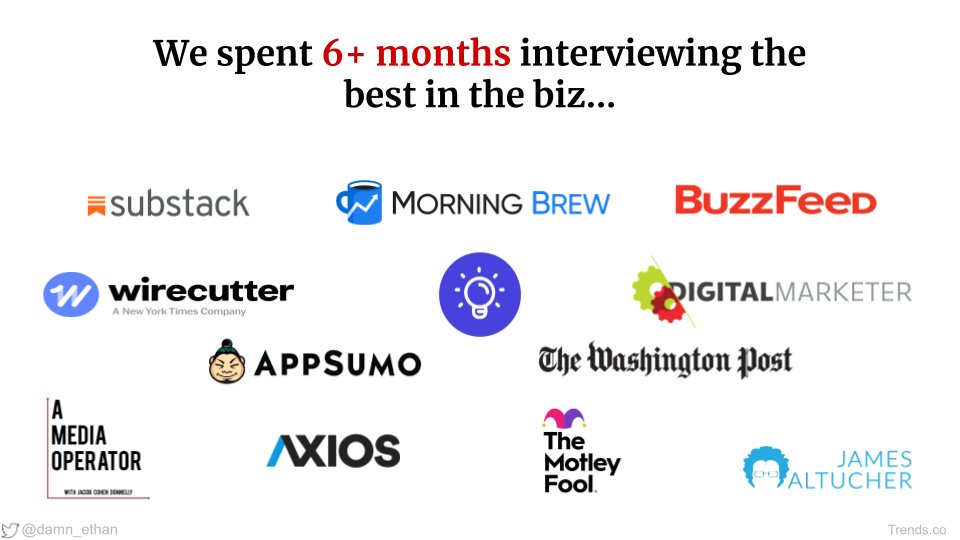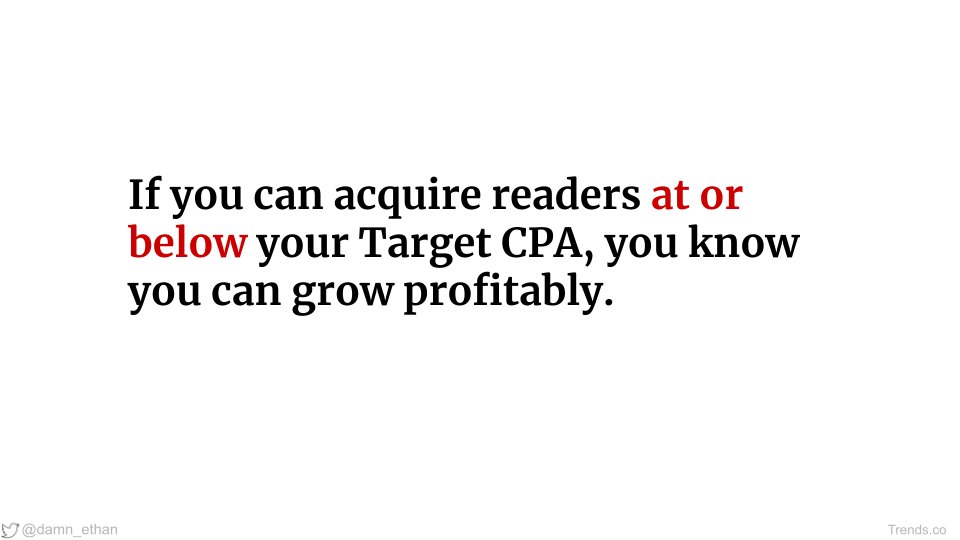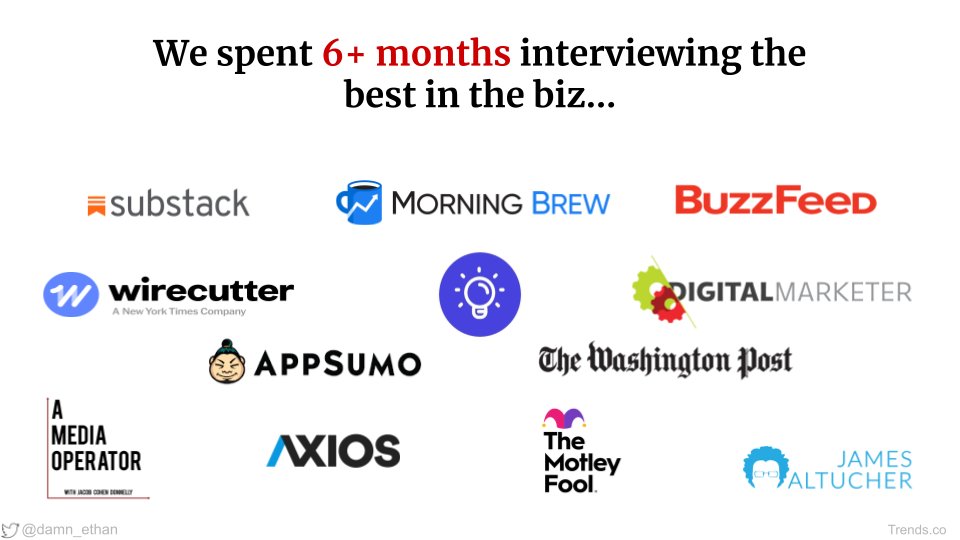
Wow... You people are way too nice!
I tried to share a thread today, and didn't realize it got cut off 2 tweets in.
To everyone nice enough to like it anyways, here's the FULL scoop on the newsletter engine
(a model we developed to explain the newsletter business) 🧵...
I tried to share a thread today, and didn't realize it got cut off 2 tweets in.
To everyone nice enough to like it anyways, here's the FULL scoop on the newsletter engine
(a model we developed to explain the newsletter business) 🧵...
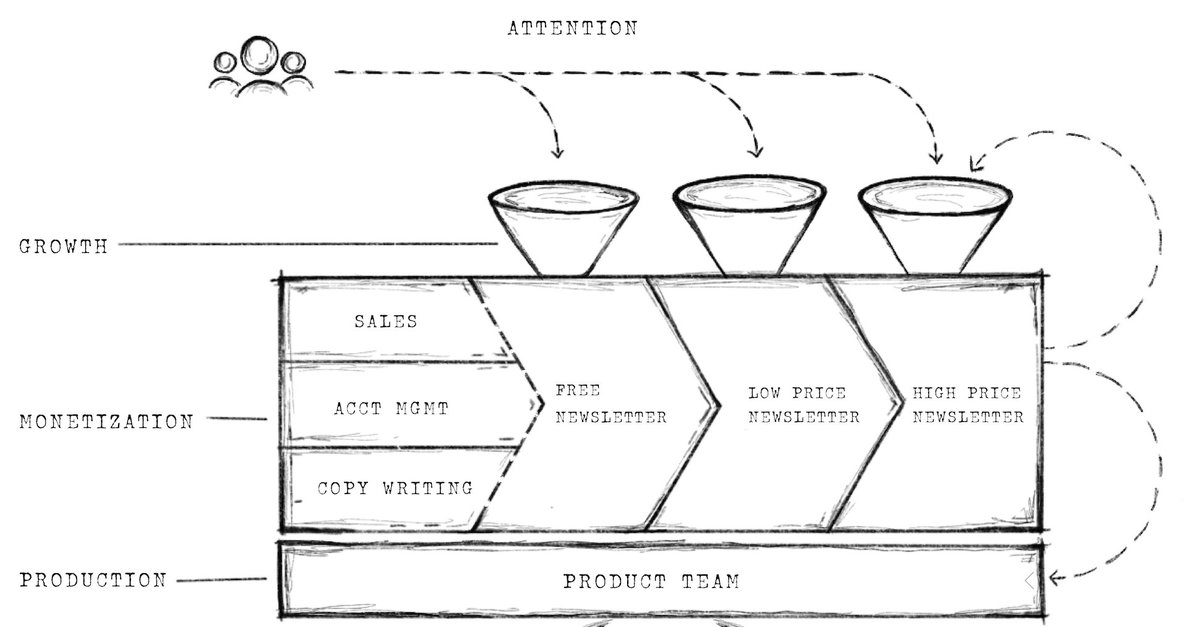
This is the Newsletter Engine. It shows how money/attention flow through a newsletter business.
What's really cool - when you understand how it works, you can use it to deconstruct any newsletter biz, diagnose problems, and find new opportunities.
Let's break it down.
What's really cool - when you understand how it works, you can use it to deconstruct any newsletter biz, diagnose problems, and find new opportunities.
Let's break it down.
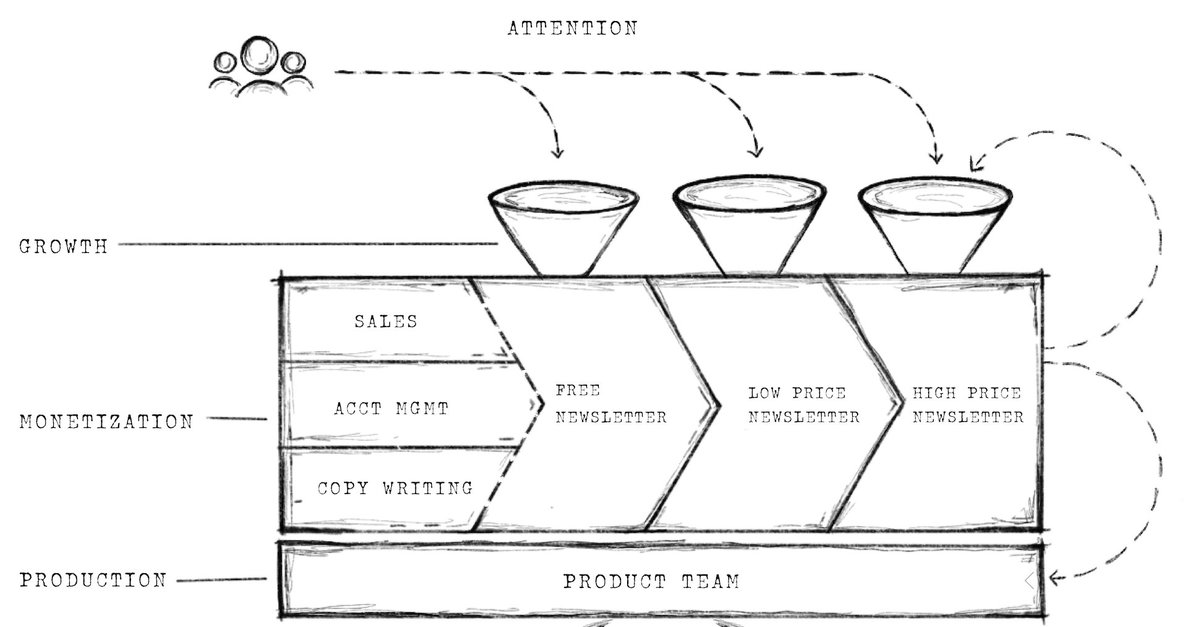
There are 3 levels to the Newsletter Engine, starting from the foundation and building upward.
The levels are:
1️⃣ Product - What you make
2️⃣ Monetization - How it makes money
3️⃣ Growth - How you get new readers
The levels are:
1️⃣ Product - What you make
2️⃣ Monetization - How it makes money
3️⃣ Growth - How you get new readers
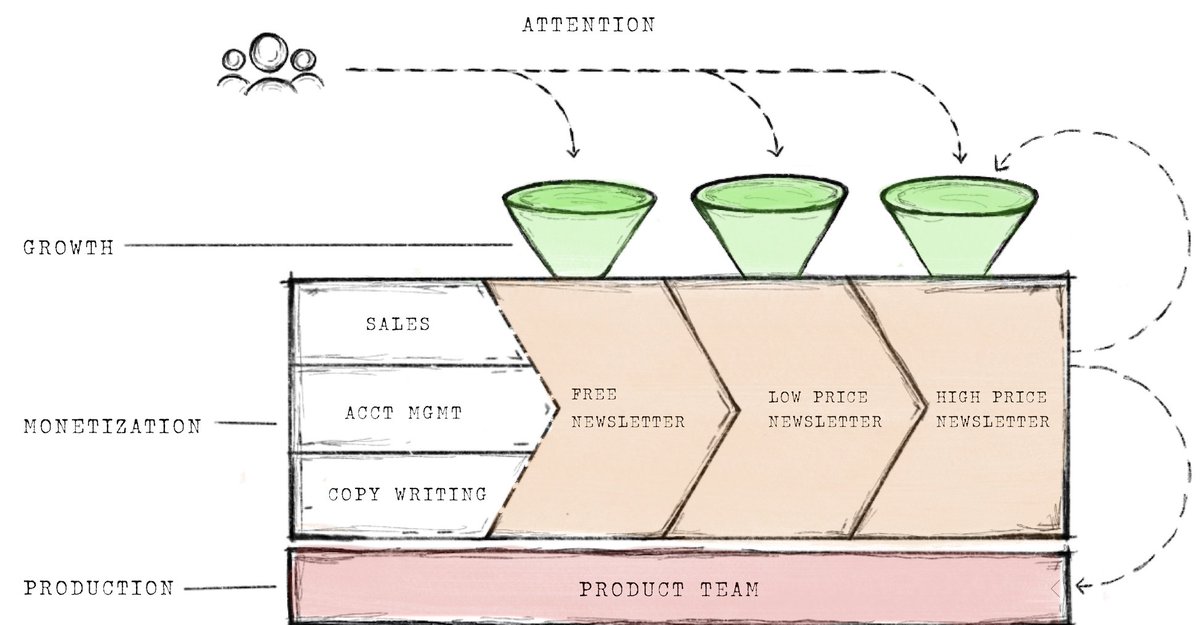
Product is the foundation of any newsletter. It's made up of 3 components:
1️⃣ Content - your editorial strategy
2️⃣ Tech - tools that power your company
3️⃣ Community - how you craft a sense of belonging among readers
Let's take a closer look at each...
1️⃣ Content - your editorial strategy
2️⃣ Tech - tools that power your company
3️⃣ Community - how you craft a sense of belonging among readers
Let's take a closer look at each...
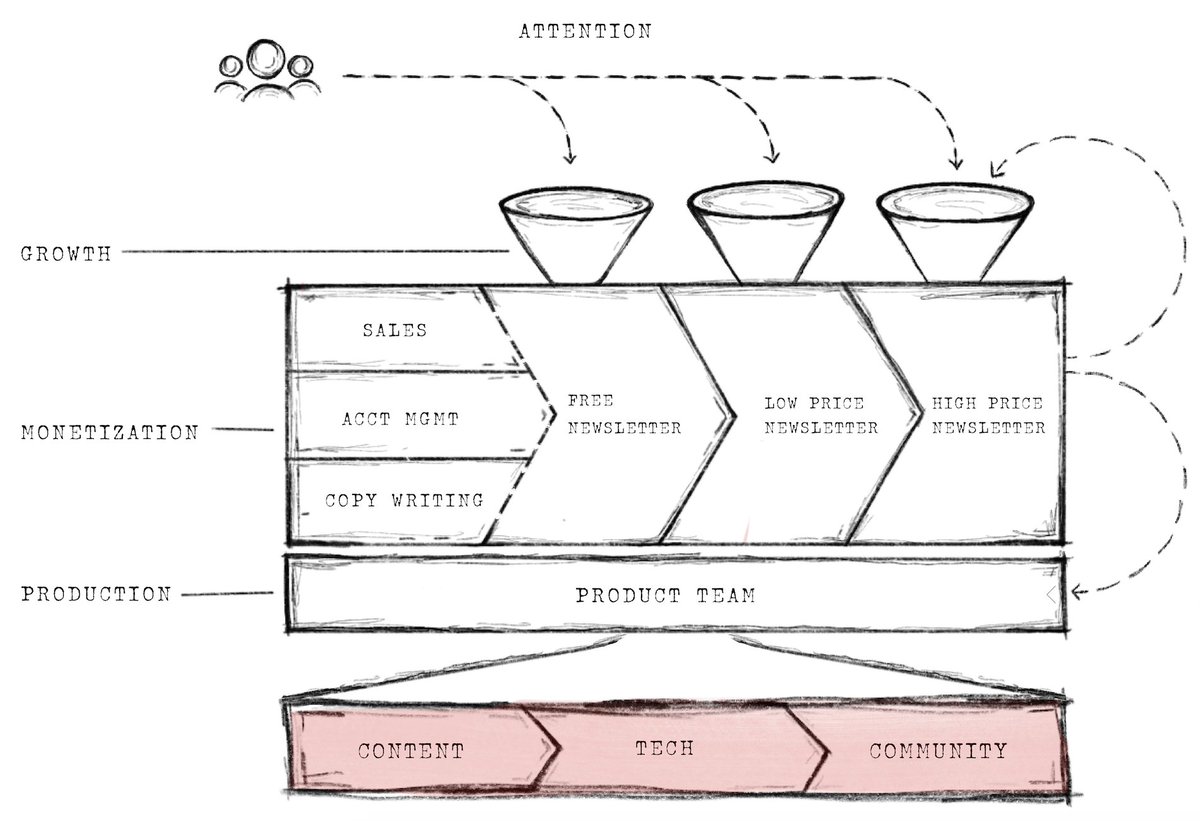
Content: The structure of your email, as well as its voice and worldview.
When people talk about their favorite newsletter, most often, they talk about how it covers a topic, not what it covers.
You can write about anything as long as you have a voice that's unique.

When people talk about their favorite newsletter, most often, they talk about how it covers a topic, not what it covers.
You can write about anything as long as you have a voice that's unique.
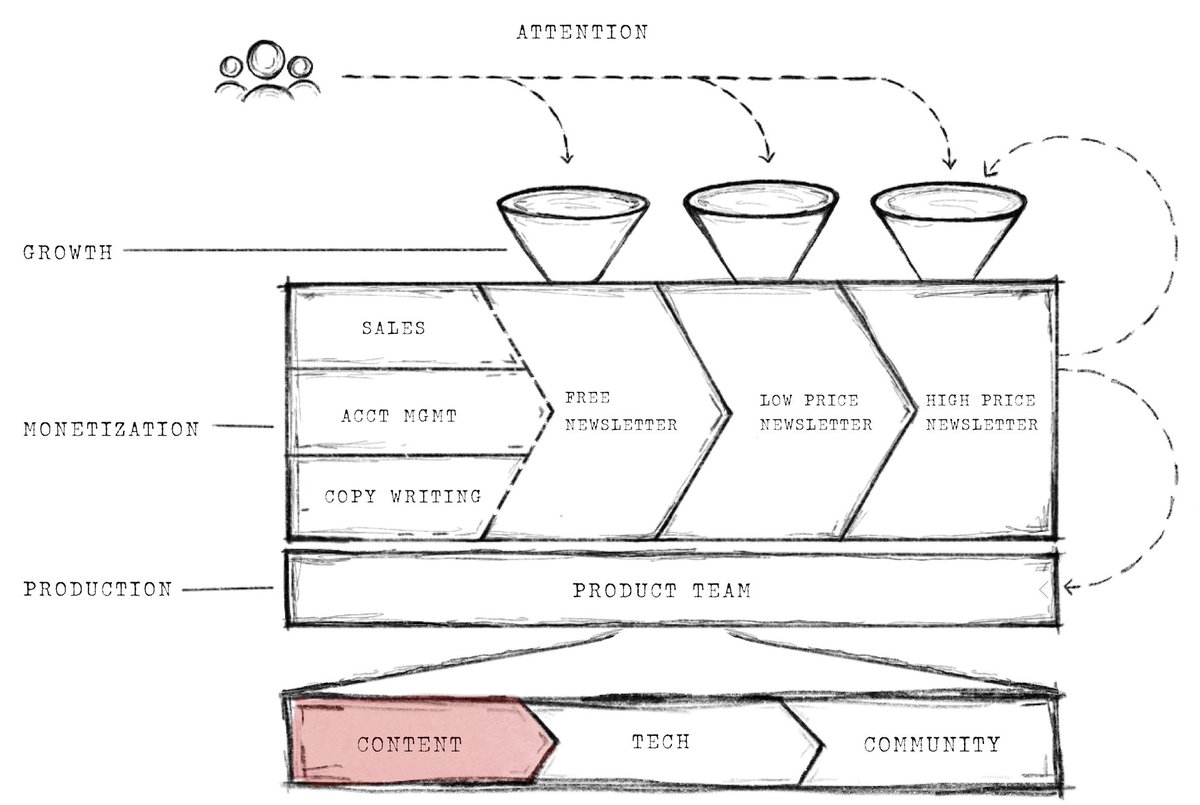
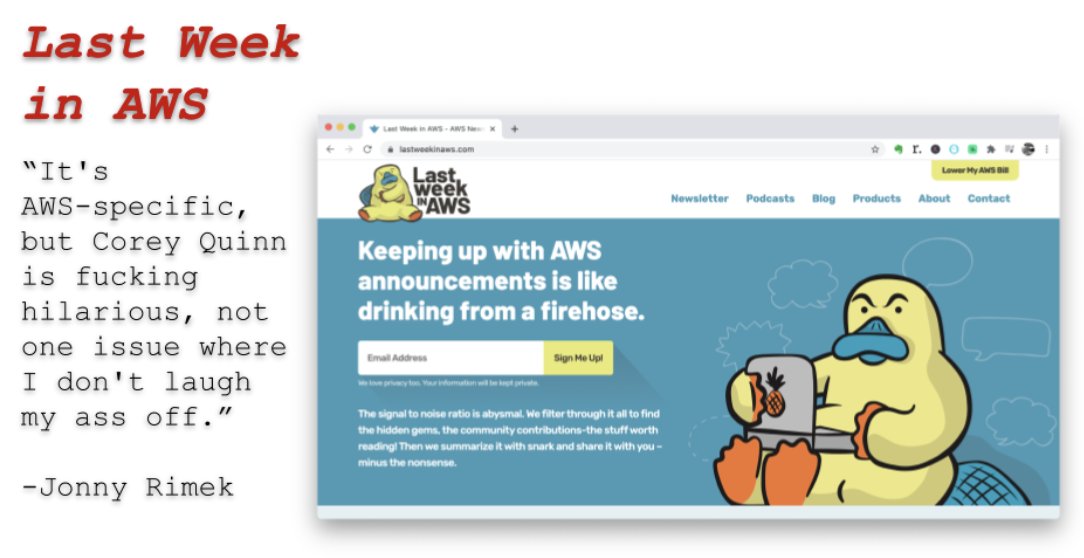
Tech: ESP gets all the attention, but there are 5 key parts to a newsletter company's tech stack:
-Website
-Registration Software
-Payment Processor
-Email Service Provider
-Analytics
Together, these facilitate the key interactions you have with readers or ad clients.

-Website
-Registration Software
-Payment Processor
-Email Service Provider
-Analytics
Together, these facilitate the key interactions you have with readers or ad clients.
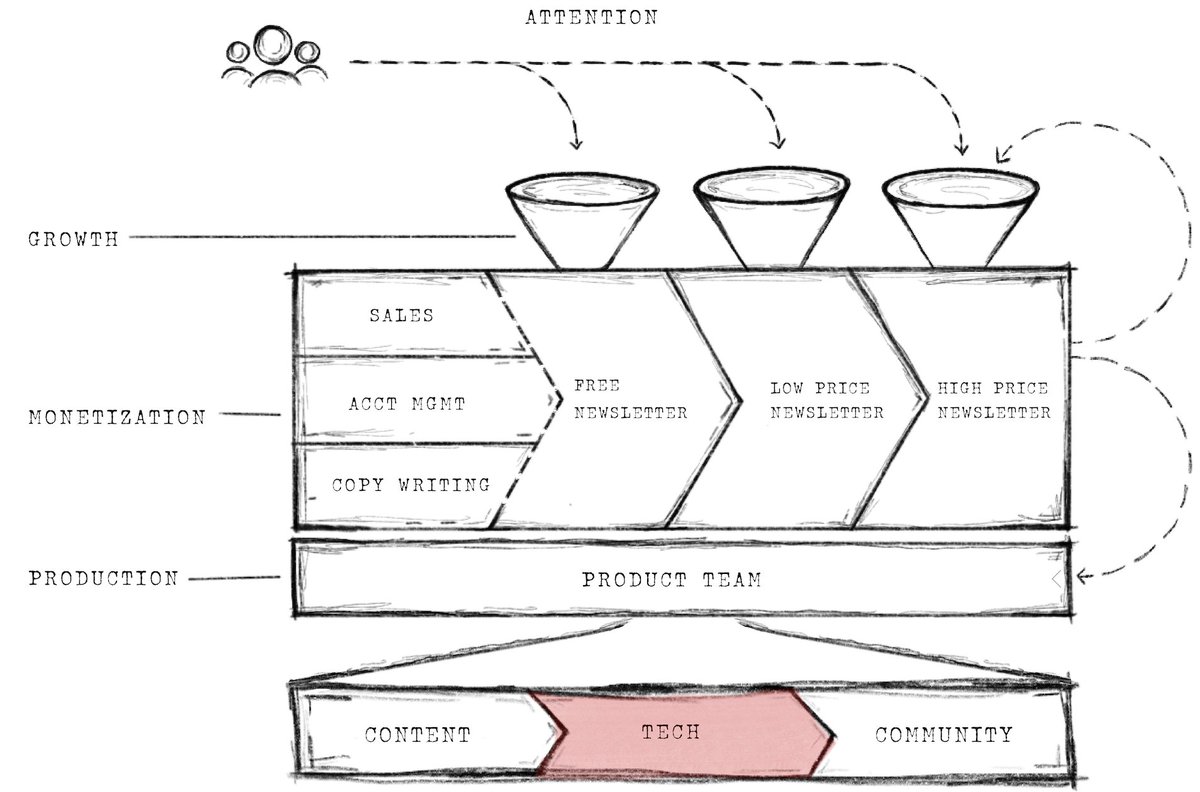
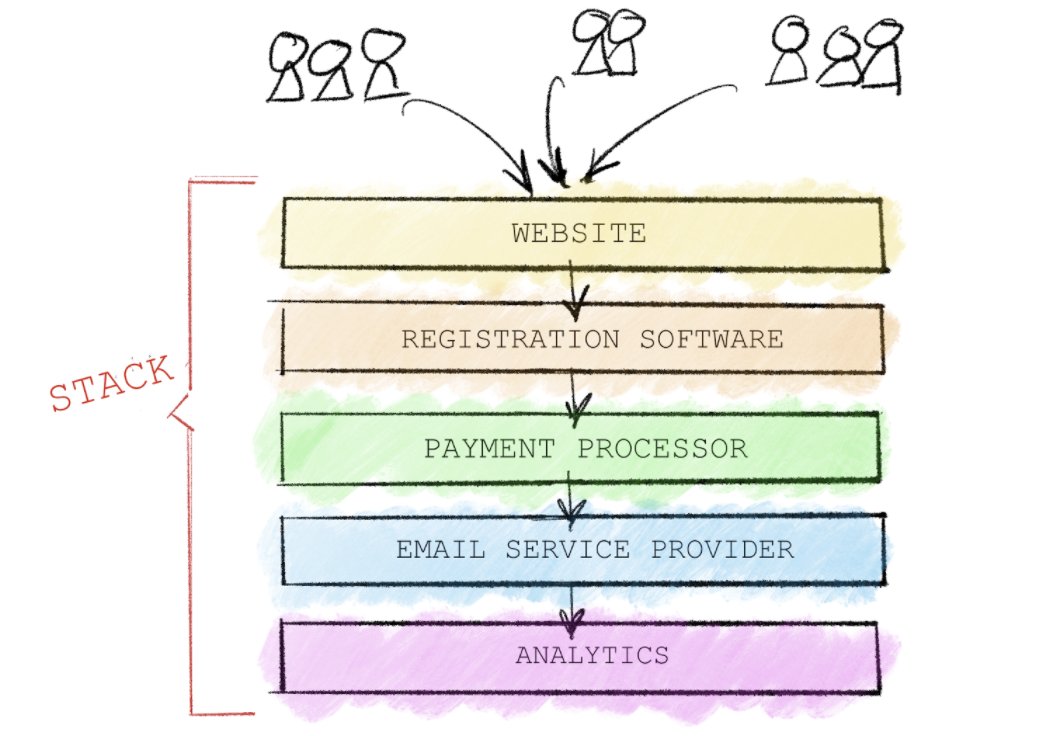
Community: The sense of belonging you're able to create among readers.
This is what keeps people around.
This is what keeps people around.
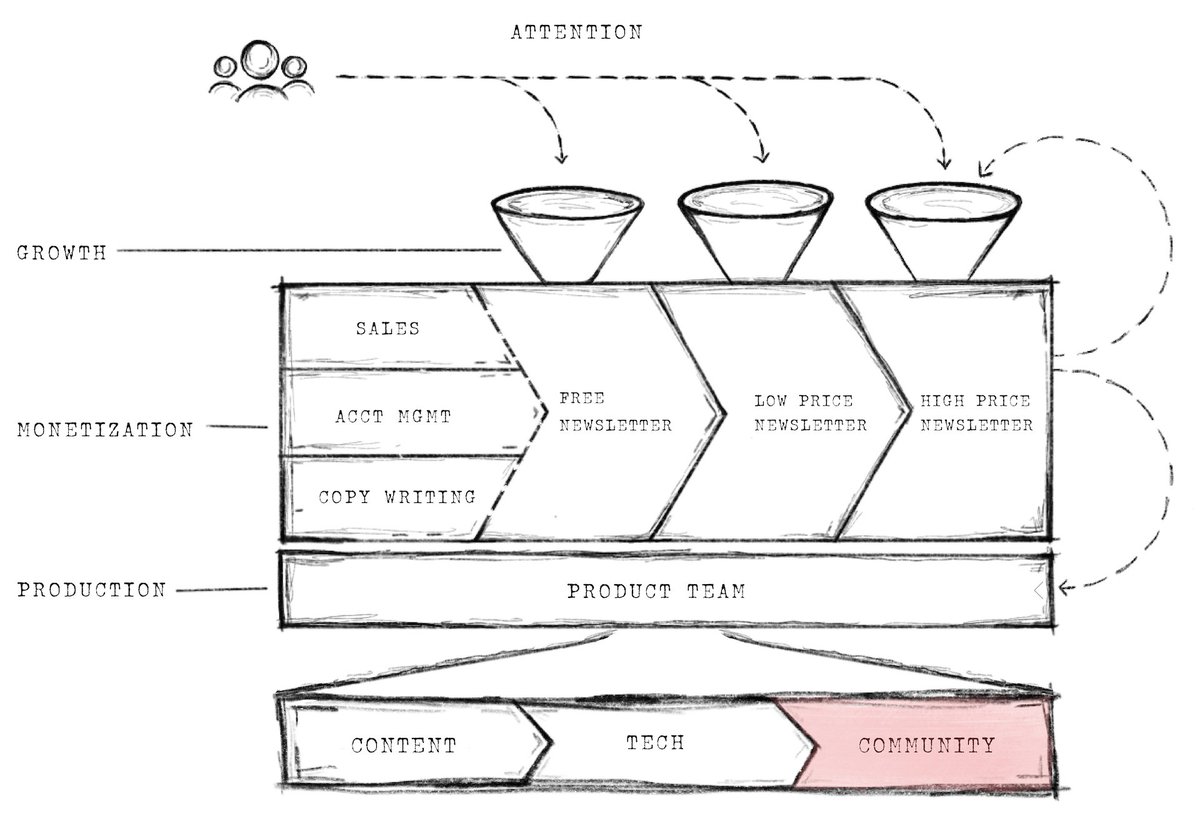
These 3 -- content, tech, and community -- touch every part of your newsletter business.
They're core to who you are, and key to your success.
You can never grow or monetize your way out of a product problem.
They're core to who you are, and key to your success.
You can never grow or monetize your way out of a product problem.
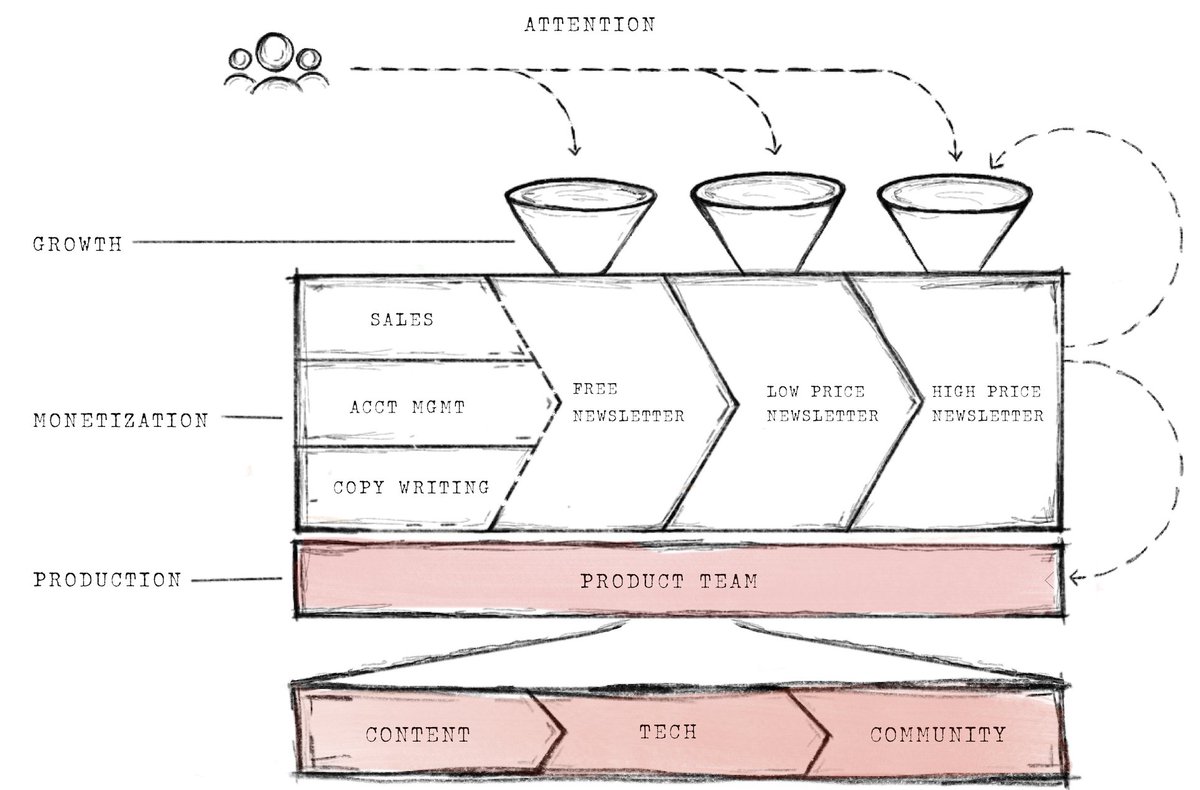
Moving up, you have the monetization layer. There are 3 basic ways to make money from a newsletter:
-Free Subscriptions (monetized via ads)
-Low Price Subscriptions
-High Price Subscriptions
A newsletter business can have 1 or more of each.
-Free Subscriptions (monetized via ads)
-Low Price Subscriptions
-High Price Subscriptions
A newsletter business can have 1 or more of each.
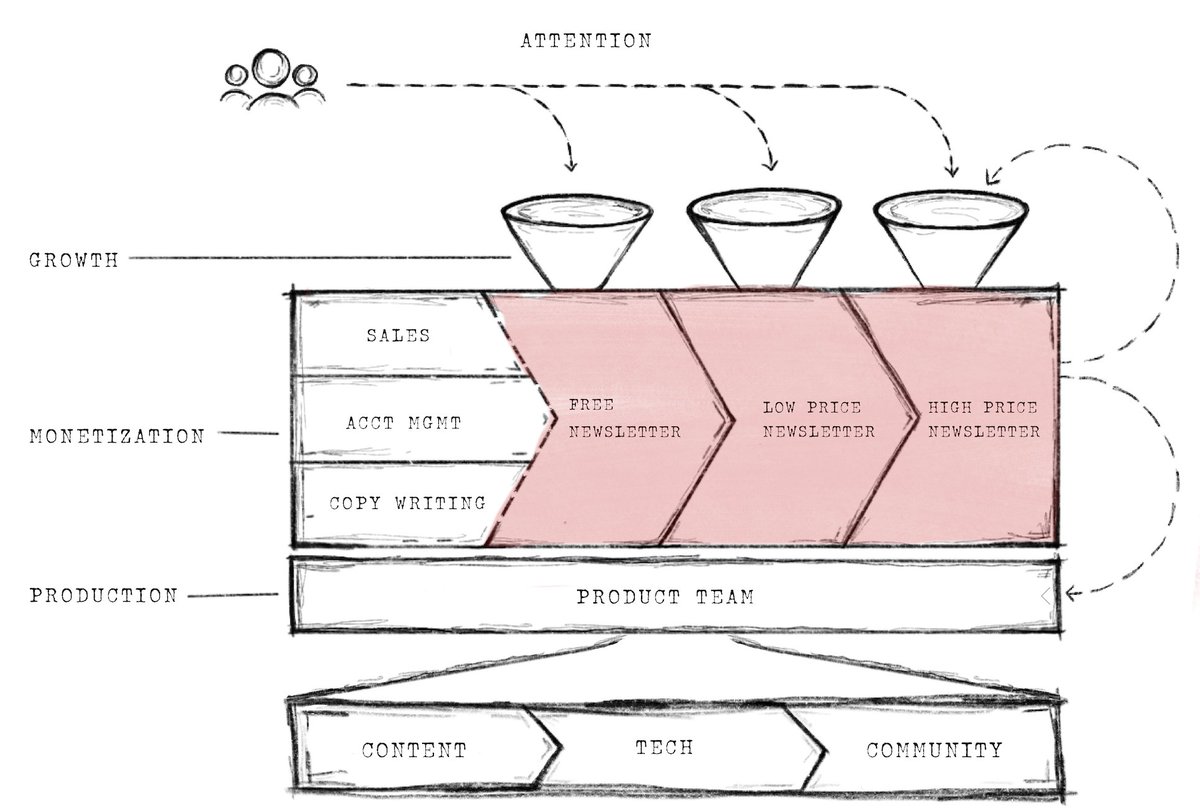
The idea is that you (ultimately) build all 3. They feed into each other.
Your free newsletter drives sales for the low-priced subscription which in turn drives sales for the high-priced subscription.
I did a longer thread on how these work here:
Your free newsletter drives sales for the low-priced subscription which in turn drives sales for the high-priced subscription.
I did a longer thread on how these work here:
https://twitter.com/damn_ethan/status/1381969678399049730
At the very top, you have growth funnels drawing new readers in. There are 3 main levers for growth:
1️⃣ Time (e.g. social media & other free tactics)
2️⃣ Money (e.g. ads and influencers)
3️⃣ Audience (e.g. referral programs)
1️⃣ Time (e.g. social media & other free tactics)
2️⃣ Money (e.g. ads and influencers)
3️⃣ Audience (e.g. referral programs)
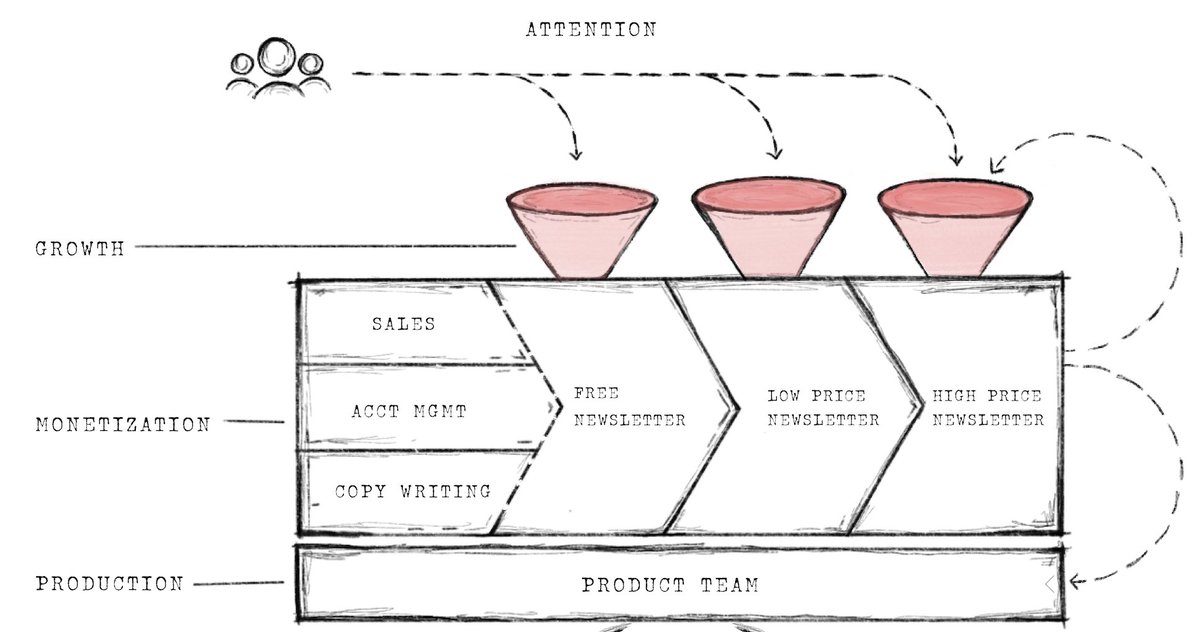
All together, it works like this:
1️⃣ A reader enters via your growth funnel.
2️⃣ Their attention is turned into money w/ your monetization strategy.
3️⃣ That money is re-invested in growth & product.
4️⃣ The cycle continues.
Attention in >> Money out >> Reinvest >>Rinse Repeat
1️⃣ A reader enters via your growth funnel.
2️⃣ Their attention is turned into money w/ your monetization strategy.
3️⃣ That money is re-invested in growth & product.
4️⃣ The cycle continues.
Attention in >> Money out >> Reinvest >>Rinse Repeat
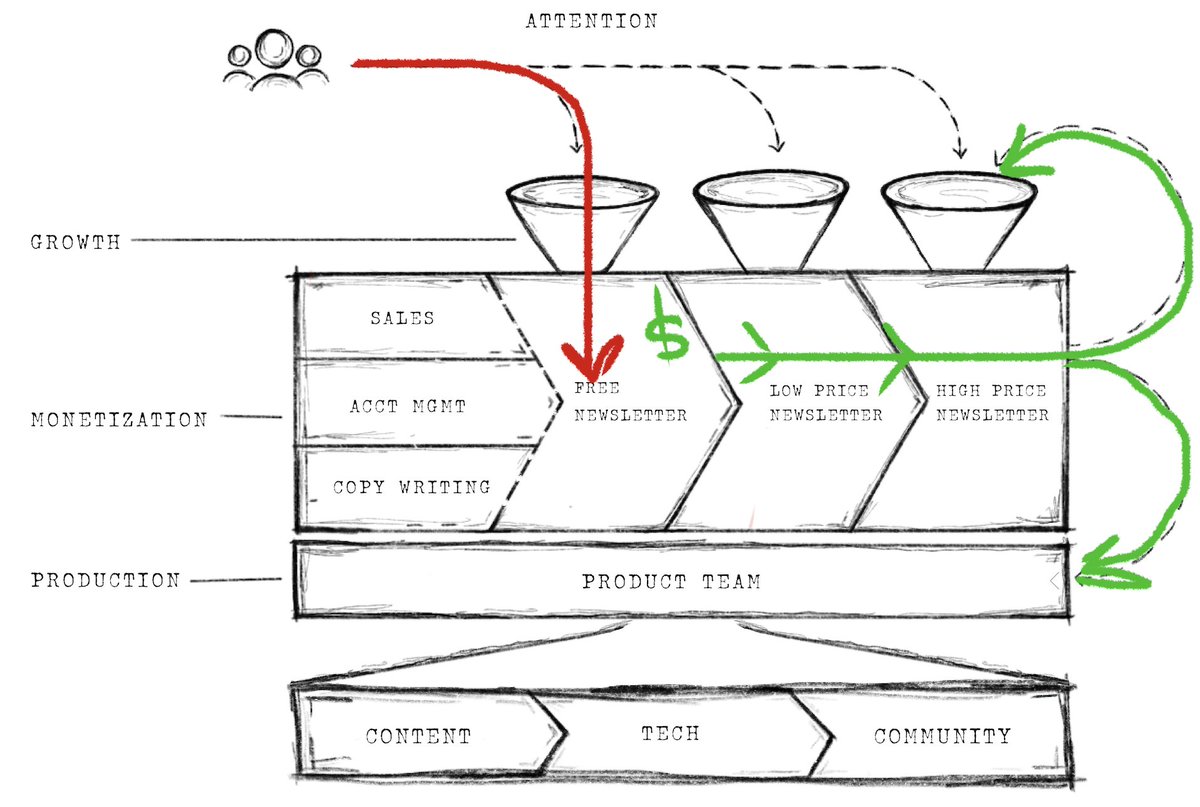
So, how do we use this?
Well, one cool thing about the Newsletter Engine is that it offers a framework you can use to deconstruct and learn from any newsletter business.
Say we want to learn from Morning Brew...
Well, one cool thing about the Newsletter Engine is that it offers a framework you can use to deconstruct and learn from any newsletter business.
Say we want to learn from Morning Brew...
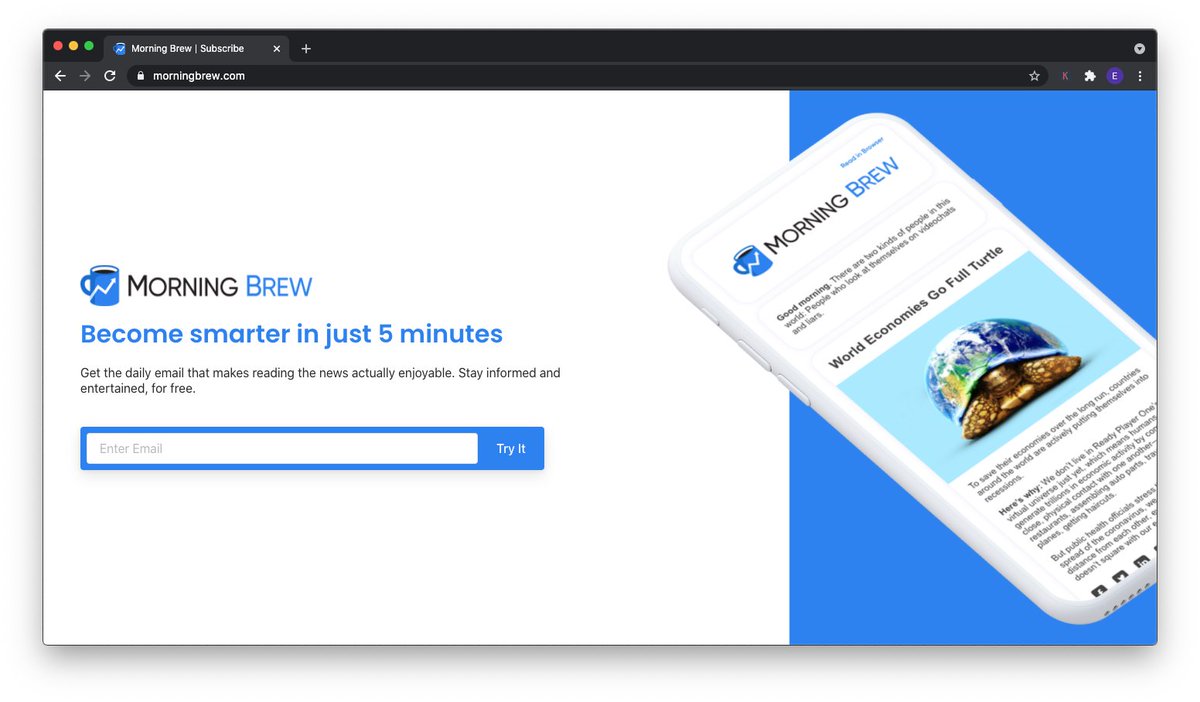
We start with the product layer, and know we need to break down 3 things:
-Their content/editorial strategy
-The technology they use
-Their community strategy
-Their content/editorial strategy
-The technology they use
-Their community strategy
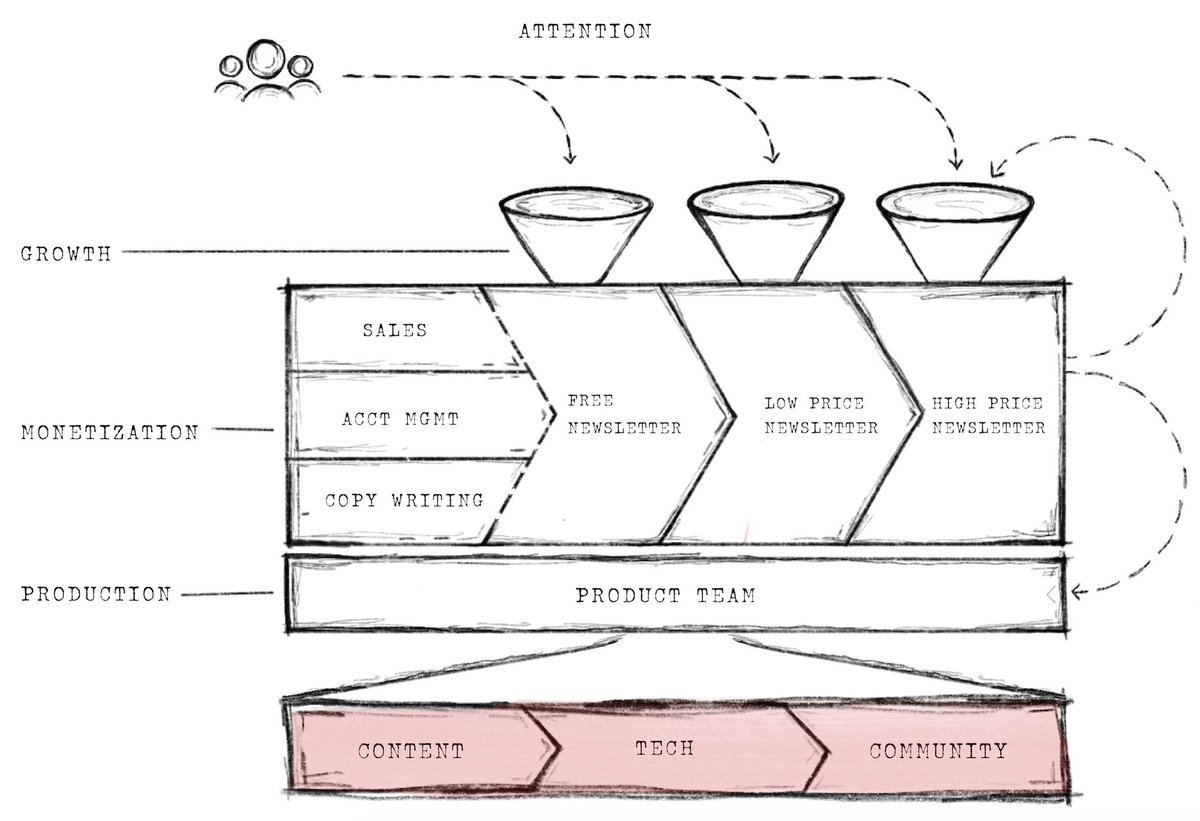
Look at content/voice, and ask yourself:
1) What, specifically, do they offer? (e.g. How many newsletters? Published how often? etc...)
2) What editorial rules do they live by (e.g. describe their voice, use of graphics, etc...)
You'll learn a lot, and start seeing white space
1) What, specifically, do they offer? (e.g. How many newsletters? Published how often? etc...)
2) What editorial rules do they live by (e.g. describe their voice, use of graphics, etc...)
You'll learn a lot, and start seeing white space
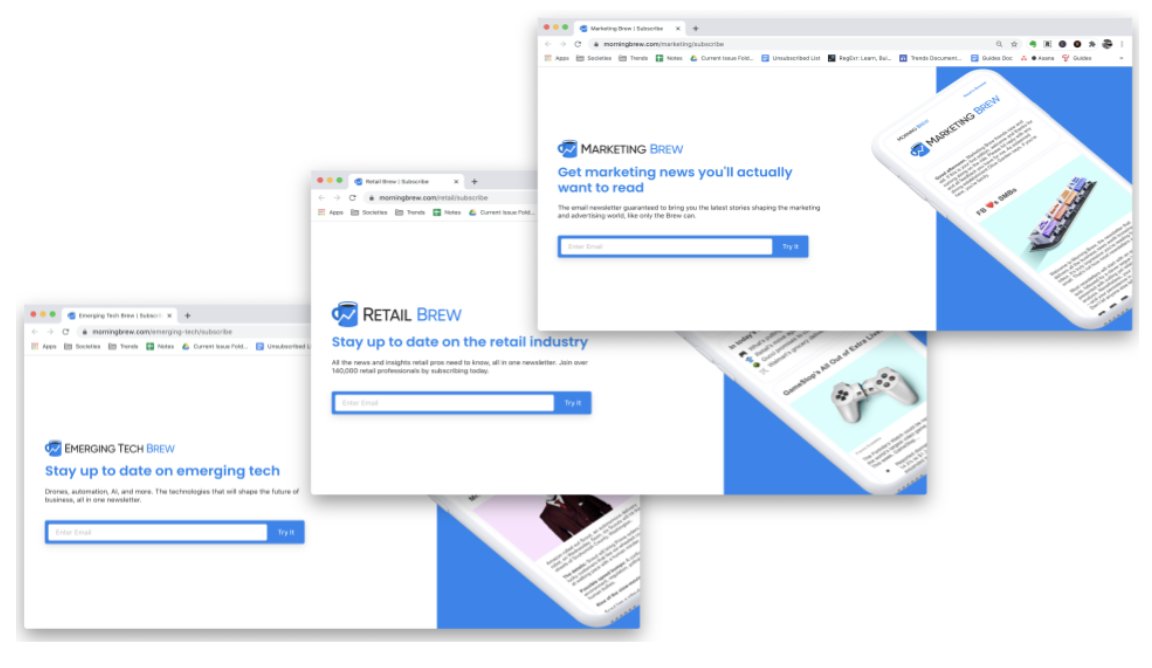
Later, you look at tech.
You can unearth a lot about a newsletter's tech stack by plugging their URL into builtwith.com
@denk_tweets has also written some interesting pieces on the tech powering MB:
medium.com/the-mission/th…
You can unearth a lot about a newsletter's tech stack by plugging their URL into builtwith.com
@denk_tweets has also written some interesting pieces on the tech powering MB:
medium.com/the-mission/th…
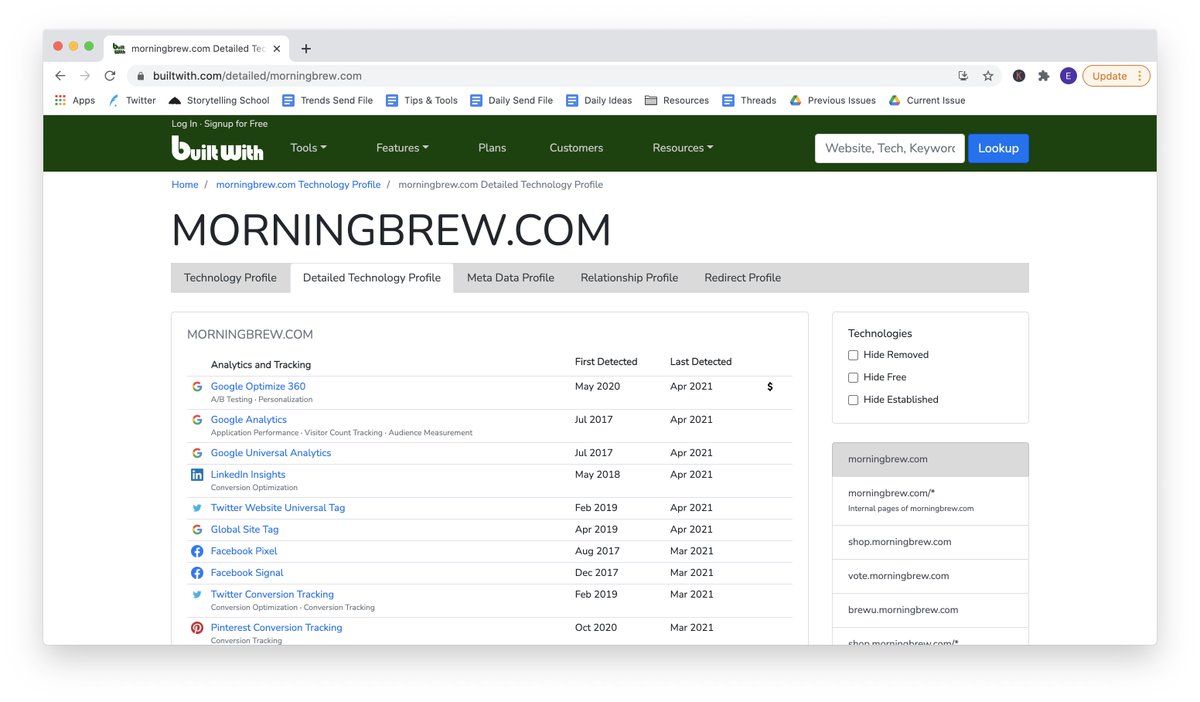
We round product out by examining community.
The Brew does some interesting things to create a sense of belonging.
For instance, they use the ☕ emoji on Twitter as a calling card. That's an interesting tactic.
The Brew does some interesting things to create a sense of belonging.
For instance, they use the ☕ emoji on Twitter as a calling card. That's an interesting tactic.
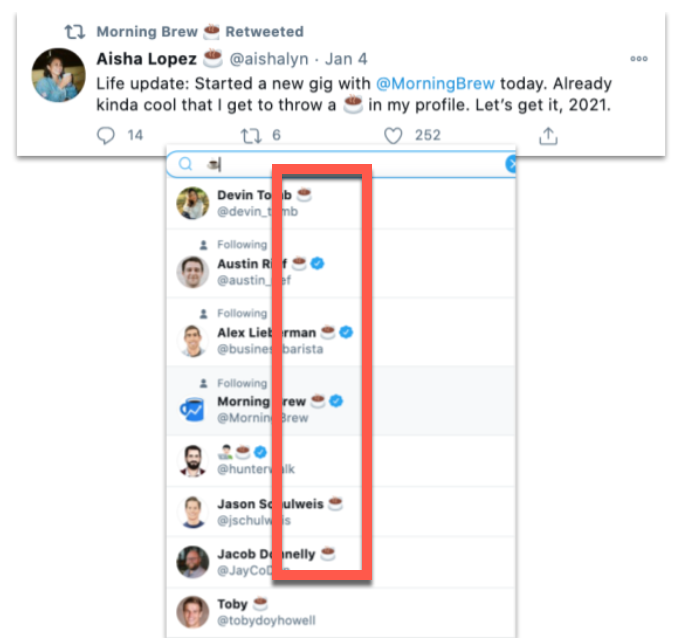
So basically, the structure of the newsletter engine gives us a template we can use for research.
When you know what you're looking for, you can spend more time learning rather than wandering.
When you know what you're looking for, you can spend more time learning rather than wandering.
Another example... Say we want to learn lessons on monetization from NYT.
The Newsletter Engine shows us exactly what to look for:
We want to know how they're using free, low-price, and high-price subscriptions to make money.

The Newsletter Engine shows us exactly what to look for:
We want to know how they're using free, low-price, and high-price subscriptions to make money.
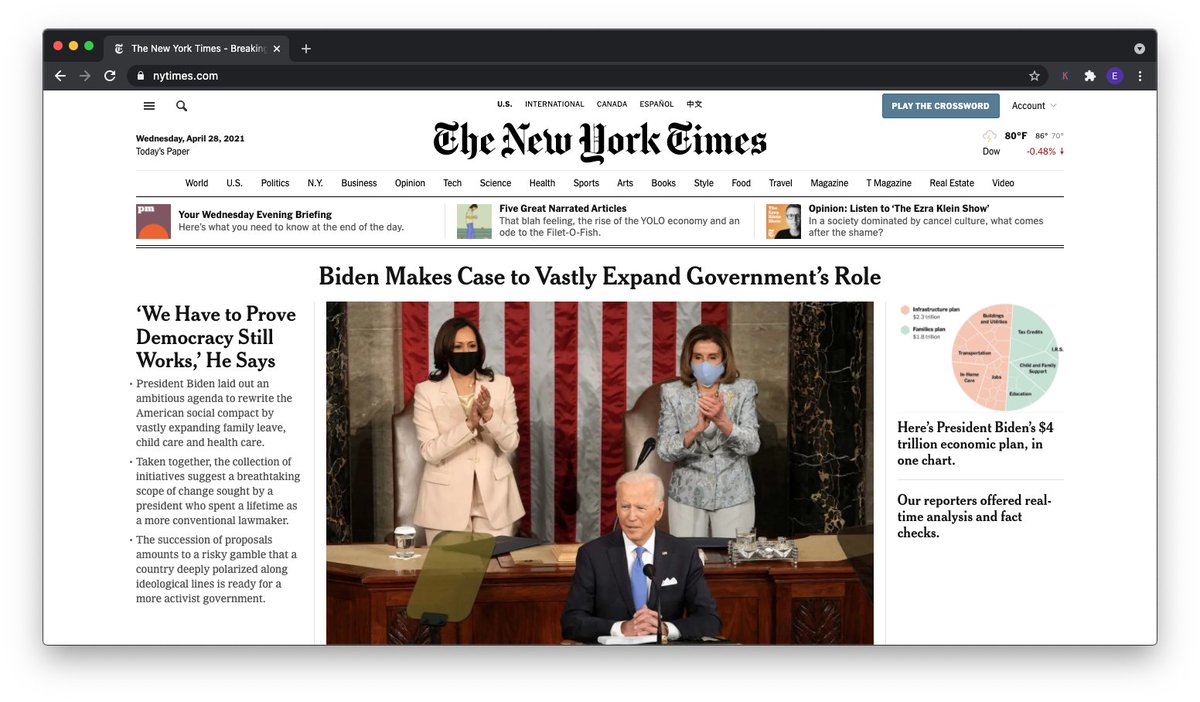
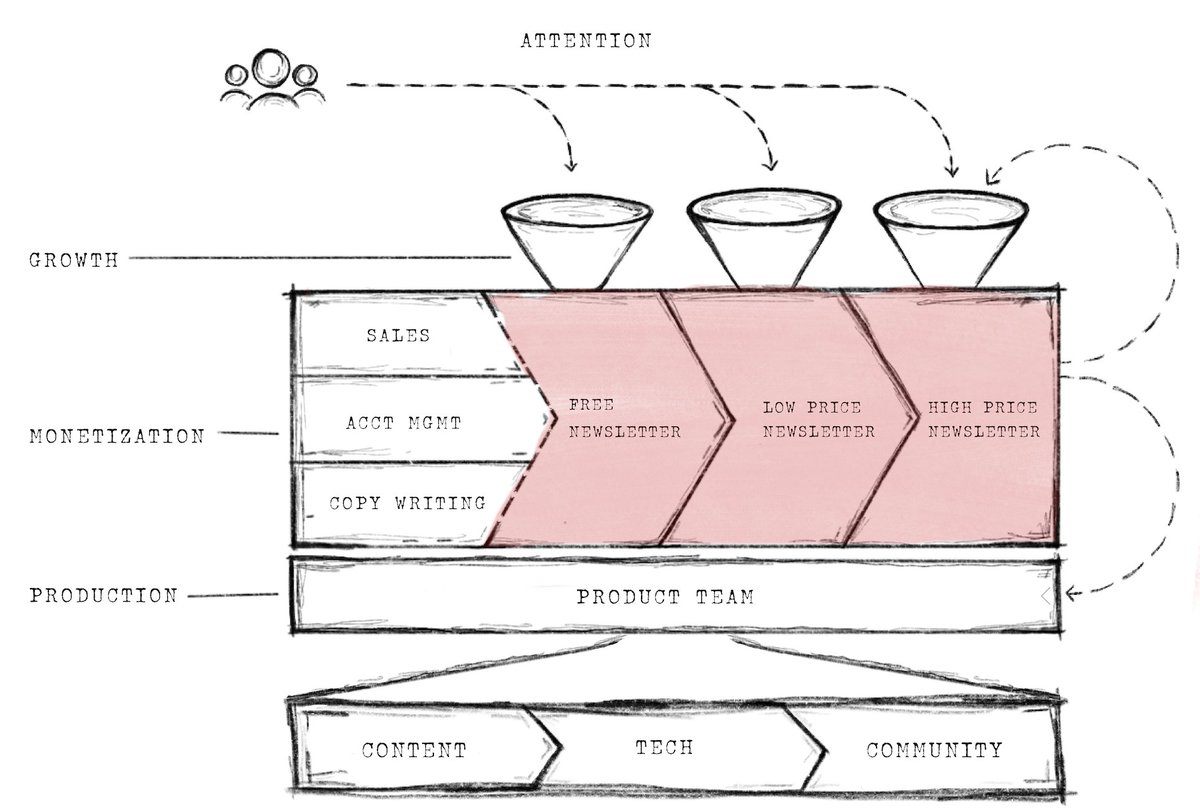
Reading their annual reports, we find that low-price subscriptions are of increasing importance.
They use dozens of free newsletters to promote a few paid subscriptions.
In fact, subscription revenue has begun to out-earn ad revenue.

They use dozens of free newsletters to promote a few paid subscriptions.
In fact, subscription revenue has begun to out-earn ad revenue.
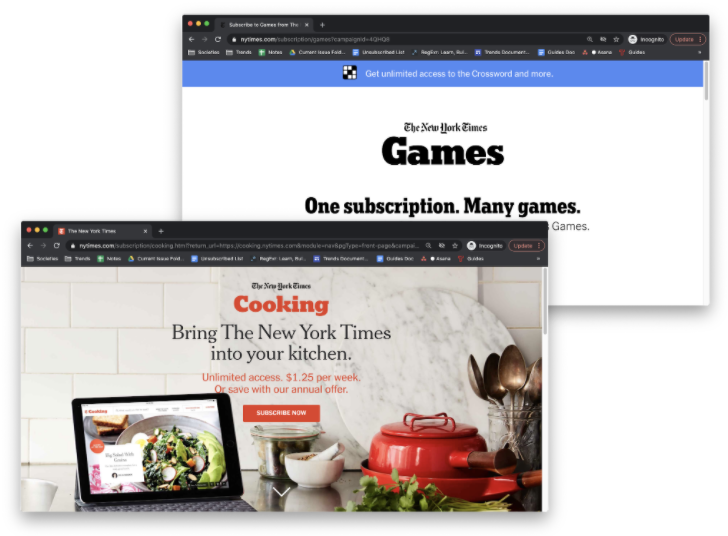
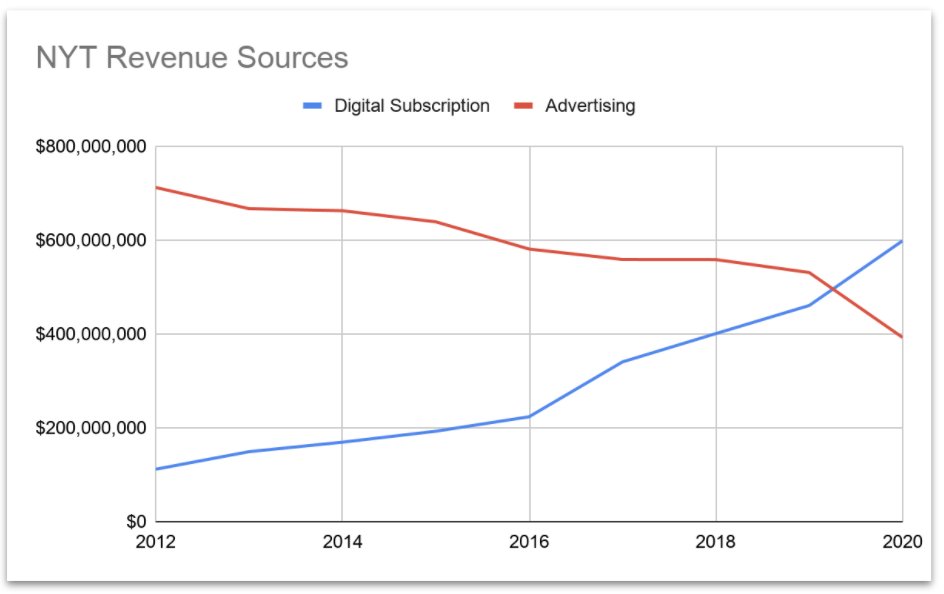
As for growth, those same annual reports are a goldmine.
You can also learn a lot about how a website gets traffic by dropping their URL into similarweb.com
You can also learn a lot about how a website gets traffic by dropping their URL into similarweb.com
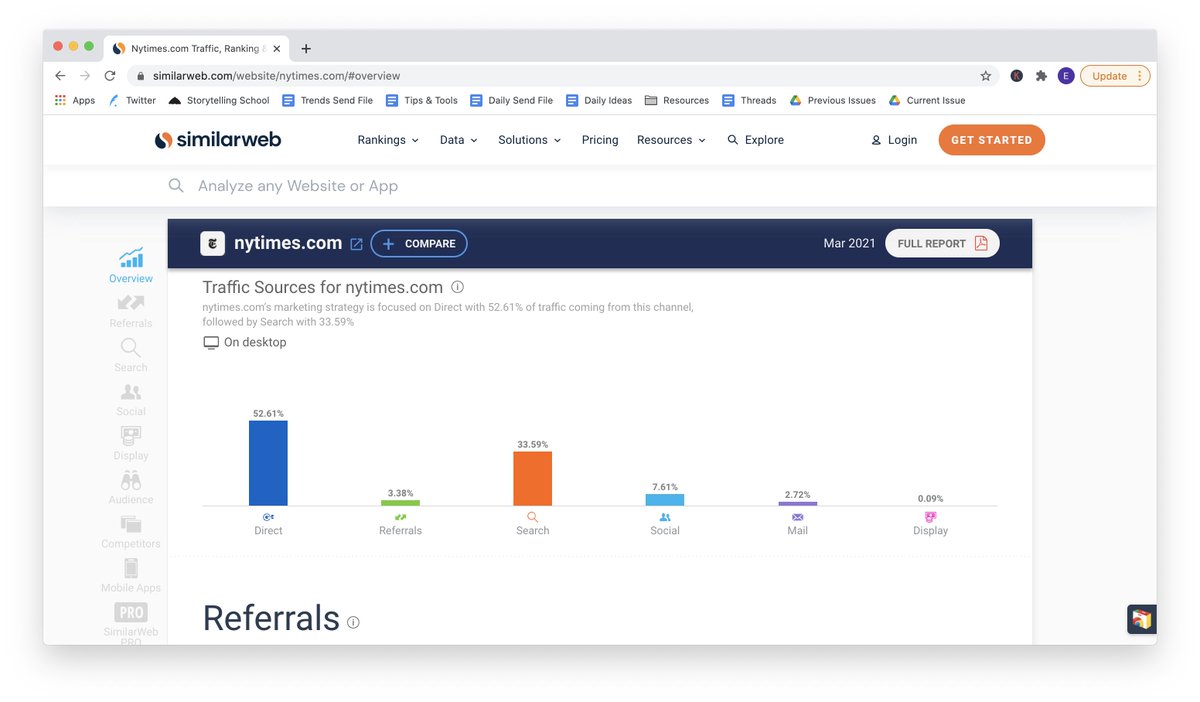
And if you want to know what's working for them in paid ads, look at Facebook's Ad Library, and sort by the longest-running ads.
Then click through to study their landing pages. Go through their funnel. Pick it apart.
facebook.com/ads/library/

Then click through to study their landing pages. Go through their funnel. Pick it apart.
facebook.com/ads/library/
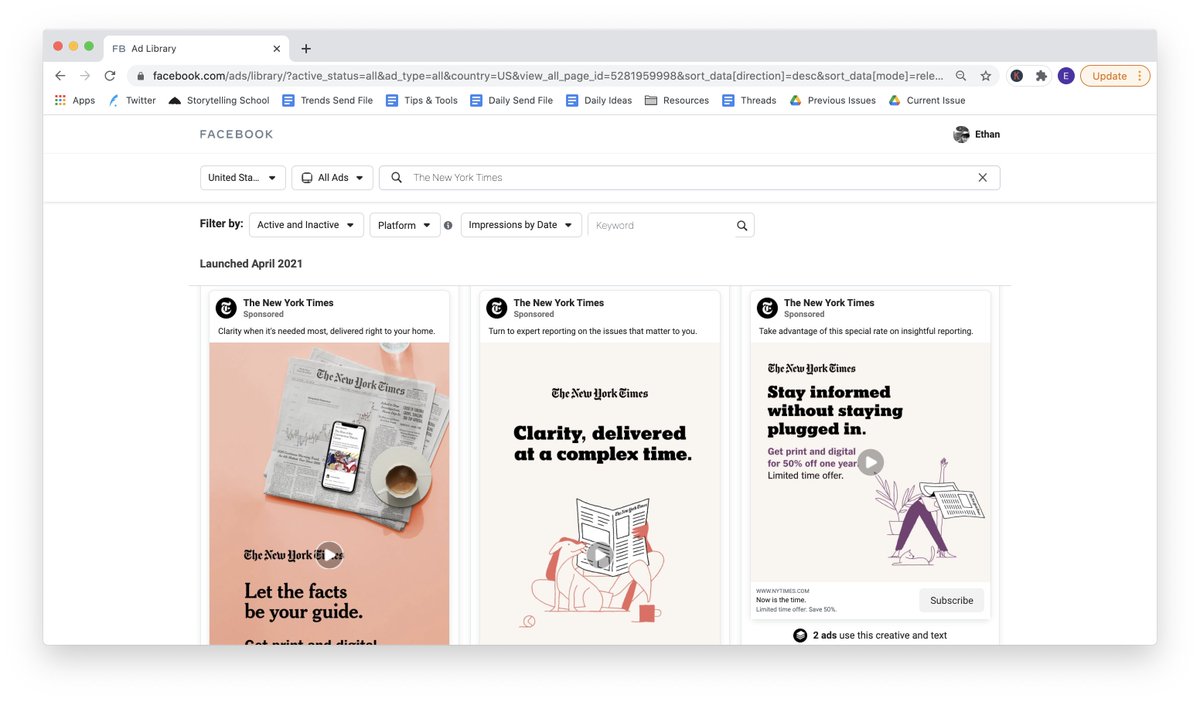
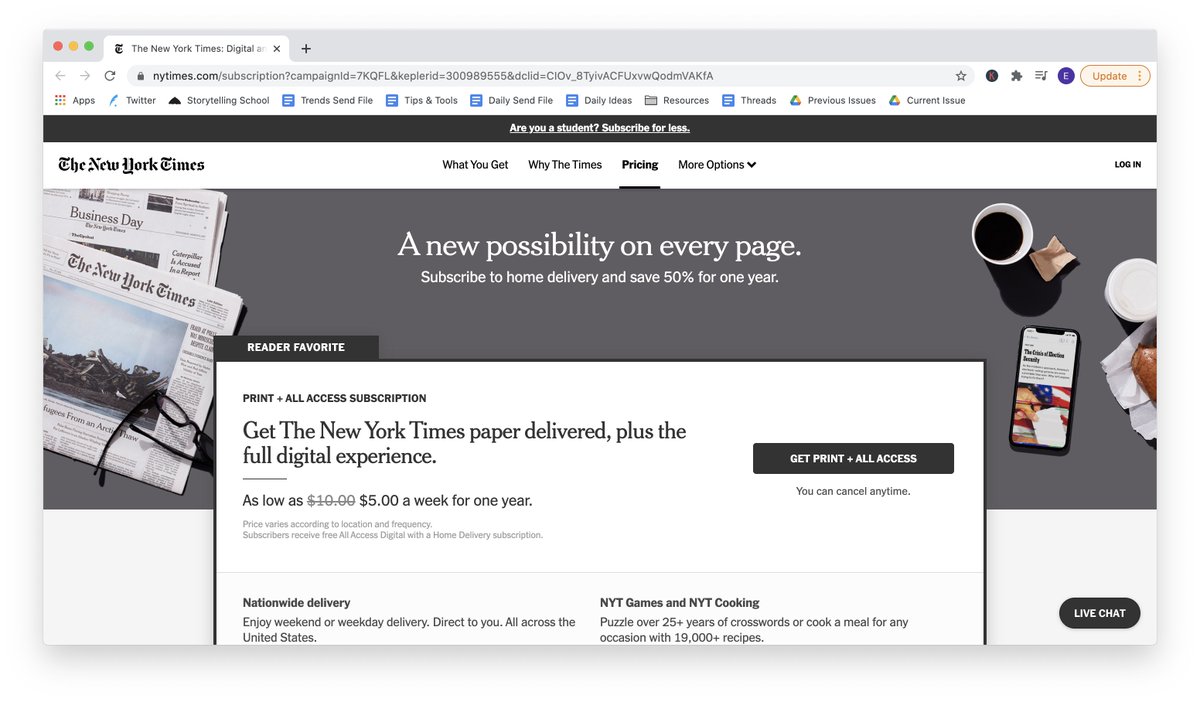
So that's it.
The Newsletter Engine gives you a framework for understanding how the business works, deconstructing other businesses, and even finding white space in the industry.
The Newsletter Engine gives you a framework for understanding how the business works, deconstructing other businesses, and even finding white space in the industry.
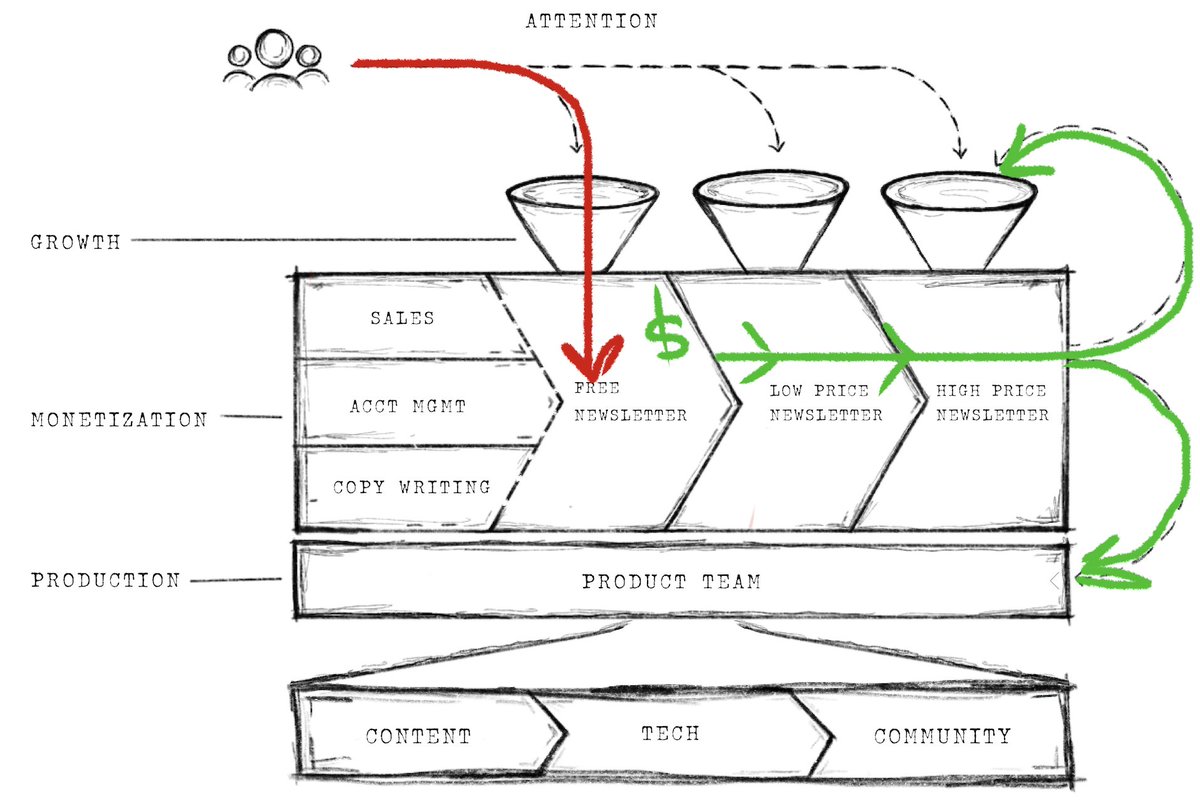
If this was helpful, go ahead and share it with someone who needs it.
We developed this model over 6+ months of dedicated research. I'll be sharing a lot more from our findings in the coming weeks.
DM if you have questions or want me on your podcast too. Happy to share more!
We developed this model over 6+ months of dedicated research. I'll be sharing a lot more from our findings in the coming weeks.
DM if you have questions or want me on your podcast too. Happy to share more!
• • •
Missing some Tweet in this thread? You can try to
force a refresh

